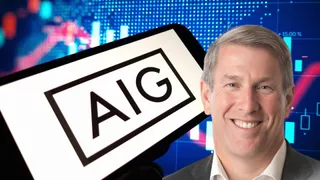
US market ‘well suited’ to deal with inflation turmoil: Fitch
The US re/insurance market is “well suited to deal with the current turmoil” despite a high US inflation rate, according to Doug Pawlowski, senior director at Fitch Ratings, which currently has a Neutral sector outlook and a Stable rating outlook in place for the US.
Official data from the US Labor Department published on September 13 showed that the annual inflation rate was 8.3 percent for the 12 months ending August 2022.
Speaking to Intelligent Insurer, Pawlowski said he based his relative confidence in the market on three factors.
First, the pricing environment, which he said had seen more than three years of favourable pricing with increasing rates, at least from a commercial insurance perspective. Second, the capital position of the industry is strong, so from a statutory capital perspective Fitch would consider it to be “very strong”, he said.
Third, looking at reserves, he said the industry has an “adequate reserve position”, a view he bases on more than 16 consecutive years of favourable calendar-year reserve development.
He added that on top of these factors, he was buoyed by the US’s lower reserve leverage, “which reduces capital impact of future reserve deficiencies”.
“The high inflation environment makes it very difficult to adequately price and accurately set reserves.” Doug Pawlowski, Fitch Ratings
Despite this confidence, Pawlowski said that the high inflation environment makes it very difficult to adequately price and accurately set reserves.
“When we look at inflation, it impacts claims drivers such as property repairs, auto replacement parts, medical care or litigation costs. This could be further impeded by a restrictive regulatory environment, political environment or just market competition in general.
“When we look at pricing, we’re more worried about longer tail line businesses such as other liabilities or workers’ compensation relative to shorter tail. You can reprice the shorter tail more quickly,” Pawlowski explained.
Lines such as personal auto and property witnessed the first impacts of higher inflation, he said. “In personal auto, physical damage in collision coverages had spikes in severity. This was due to inflation and COVID-19 pandemic supply chain shortages, made it difficult to get parts or components, and they cost more.
“It was difficult to get skilled labour to repair automobiles and people saw the price of used cars going up significantly.”
In the homeowners business the same factors led to higher costs, he added. “We saw shortages in key commodities such as lumber and roofing materials.”
Results take time
The key for re/insurers responding to inflation, specifically with homeowners lines, is to make sure that the appropriate value of the property is insured. “During times of inflation and economic volatility that task is more difficult,” Pawlowski said.
However, that is exactly the response that is required, he said. Re/insurers need to price the product appropriately, but the results showing whether this has worked are not immediate.
“Unfortunately the success of the effort around pricing is going to be measured over a longer time, so it’s too early to tell absolutely. We have seen significant price increases and it currently seems to be offsetting inflation.
“Once again we’ve had over three years of good price increases, especially from the commercial lines. Shorter tail lines can respond faster than the longer tail lines.
“The concern on a longer tail line would be that if you’re getting it wrong it’s going to take longer to see and it’s going to be more material,” he said.
“When we look at pricing, we’re more worried about longer tail line businesses.”
“The way these pricing errors manifest is through adverse loss development as the true experience emerges.”
This is why it will take some time to see how the actual losses emerge in this current accident year, he said.
With some big market challenges ahead, it’s hard to think of a lot of positives right now, he said, but there could be opportunities with the rising interest rate environment.
“When we look at re/insurers in the non-life sector, their investment portfolios tend to be heavily concentrated in high quality fixed-income securities,” Pawlowski said. “These bond portfolios typically have a duration under five years.
“We began seeing in 2022 that the new bonds the companies were putting on their books had a higher coupon rate than the bonds that were maturing. After many years of low interest rates, that was finally a good sign.”
He said that investment income from these bonds should start improving, although since the duration is around five years or a little less, it’s going to take four to six years for the portfolio to turnover completely to incorporate these higher rates, he concluded.
Already registered?
Login to your account
If you don't have a login or your access has expired, you will need to purchase a subscription to gain access to this article, including all our online content.
For more information on individual annual subscriptions for full paid access and corporate subscription options please contact us.
To request a FREE 2-week trial subscription, please signup.
NOTE - this can take up to 48hrs to be approved.
For multi-user price options, or to check if your company has an existing subscription that we can add you to for FREE, please email Adrian Tapping at atapping@newtonmedia.co.uk
Editor's picks
Editor's picks
More articles
Copyright © intelligentinsurer.com 2024 | Headless Content Management with Blaze

